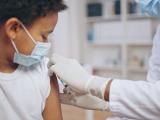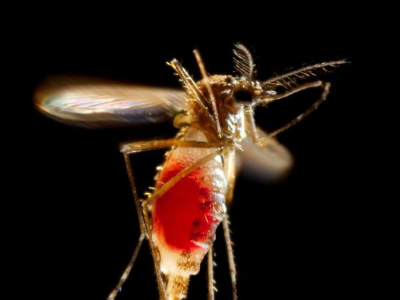May 23, 2005 (CIDRAP News) – The Department of Health and Human Services (HHS) recently announced that $1.33 billion will be available in this year's round of funding to states to improve preparedness for terrorism and other public health emergencies.
The total includes $862.8 million in funds administered by the Centers for Disease Control and Prevention (CDC) to boost preparedness for bioterrorism, infectious disease outbreaks, and public health emergencies. Another $471 million will be passed out by the Health Resources and Services Administration (HRSA) to improve hospitals' ability to cope with events that cause large numbers of casualties.
The total amount is down about $14 million from last year's total, which included $849.6 million in CDC grants and $498 million in HRSA grants. The money goes to states, territories, and four metropolitan areas: Los Angeles County, Chicago, New York City, and Washington, DC.
The package is the fourth in a series of large federal allocations for public health preparedness that began in 2002, following the terrorist attacks and anthrax mailings of 2001.
HHS said the funds will be used to upgrade infectious disease surveillance and investigation, prepare the healthcare system to deal with mass casualties, expand public health laboratory and communications capacities, and improve disease-reporting communication between hospitals and city, local, and state health departments.
Setting specific objectives
One important new wrinkle in the process this year is that the CDC is making an earnest attempt to define preparedness in terms of specific goals and performance capabilities.
The CDC released a document May 13 to guide jurisdictions through the application process. The document includes a lengthy set of goals, under the headings Prevent, Detect/Report, Investigate, Control, Recover, and Improve. The guidelines spell out particular outcomes, tasks, and measures of performance under each goal.
"The preparedness goals or measurements—that is a new piece to the cooperative agreement," CDC spokesman Von Roebuck told CIDRAP News. "They have not been in there before. They do build a bit up on the past recommendations as far as key points that we wanted to have covered. They actually are a work in progress. . . . We'll listen to what states have to say, and they'll be modified in some way if necessary."
Last year the CDC guidelines were framed in terms of focus areas or activities, such as planning, epidemiology and surveillance, biological laboratory, risk communication, and training, according to Aggie Leitheiser, assistant commissioner for the Health Protection Bureau in the Minnesota Department of Health.
"It was focused much more on tasks," Leitheiser told CIDRAP News. "This year they've switched to identifying the goals that we're trying to achieve with this work. They've identified nine, and in that, I believe, are over a hundred critical tasks or subtasks."
The goals and tasks have performance measures linked to them. For example, the prevention goal includes planning for all kinds of public health emergencies. For one of the performance measures in that category, Leitheiser said, "We are to measure the time it takes to get our initial wave of personnel to a staging area to staff emergency operations, and the target is 90 minutes."
For another example, the "investigate" goal calls for speeding up the identification of causes, risk factors, and appropriate interventions for those affected by threats to public health. One of the related performance measures is to be able to start an epidemiologic investigation within 3 hours after an unusual pattern of disease cases is detected.
Another goal is to speed up the detection and reporting of dangerous agents in tissue, food, or environmental samples. One of several associated performance measures is the ability to send a sample potentially containing an infectious agent to a reference laboratory within 60 minutes after collecting it.
"We're very pleased to see the switch" in approaches, Leitheiser said. "Rather than 'How many meetings did you have?' [the CDC is asking], 'Can you show you're able to act effectively?'"
Questions raised about progress
She said many groups, including Congress, the CDC, and state health departments, have been asking how much progress has been made in bioterrorism preparedness with the money that's been spent in recent years. "I think the CDC is moving in a deliberate way to answer those questions," she said.
Not that the new guidance is flawless, Leitheiser said. "Some of them [performance goals] are frankly a little unrealistic. For example, that we be able to handle 1% of the population calling in for information. That would be 50,000 people, which would probably take down the phone system."
She also said that with the new approach, applying for the funds will probably take more work this year. Officials will have to write a description of how they plan to develop the ability to handle each of the critical tasks in the guidance.
"I think it's very good, but change is always hard," she said.
Leitheiser said the guidelines for HRSA funding for hospitals didn't change as much as the CDC guidelines did this year. "The HRSA grant I think has been more focused from the beginning," she said. "They are trying also to be aware of measurement and impact, but they didn't go to the same format that CDC did."
The CDC money includes a base grant of $3.9 million for each jurisdiction, plus an additional amount based on population, according to Roebuck of the CDC. The amounts range from $4.9 million for Wyoming to $61.3 million for California. Thirty-one states and cities are due to get more money this year than they did last year, while 23 will receive less.
The HRSA funds are allocated much the same way as the CDC money, with a base grant plus an amount based on population. David Bowman, a HRSA spokesman in Washington, DC, said the base grant this year is slightly lower than the $1 million used last year. Sums range from about $1.3 million for Wyoming to $39.2 million for California.
Health departments have until Jul 13 to apply for the CDC funds, and the money will be available for spending starting Aug 31, Roebuck said.
Bowman said the deadline for applying for HRSA funds is Jul 1, with the money becoming available after Aug 31.
Program for cities expands
With the CDC funding, HHS is expanding a program to help major cities develop the ability to quickly provide oral drugs to the entire population in a public health emergency. Last year 21 urban areas received funds under the program, called the Cities Readiness Initiative. This year, the CDC is increasing the total funds for those 21 areas by $10 million and is adding another 15 metropolitan areas in 15 states, HHS reported.
Funds for the program this year will total $40.18 million, officials said. The largest sums are slated to go to New York City ($5.1 million) and Los Angeles ($3.44 million).
The CDC is also continuing a program begun last year to strengthen infectious disease surveillance in states bordering on Mexico and Canada. A total of $5.44 million will be available for the Early Warning Infectious Disease Surveillance Program in the border states.
The money is for developing and implementing a program to detect, investigate, and report unusual infectious disease cases in the border regions, HHS said. Twenty states are to receive shares of the money, but most of it will go to Texas (about $2 million) and California ($1.5 million).
The CDC's guidelines also ask states to take steps to prepare for an influenza pandemic. One suggestion is that states use CDC funds to buy supplies of the antiviral drug oseltamivir and store them in hospital-based caches funded by HRSA. Health departments could then use the drug to treat their own staff members if needed in a pandemic, the guidelines say.
See also:
May 13 HHS news release
http://archive.hhs.gov/news/press/2005pres/20050513.html
CDC's "Cooperative Agreement Guidance for Public Health Emergency Preparedness"
http://www.bt.cdc.gov/planning/guidance05/index.asp


















